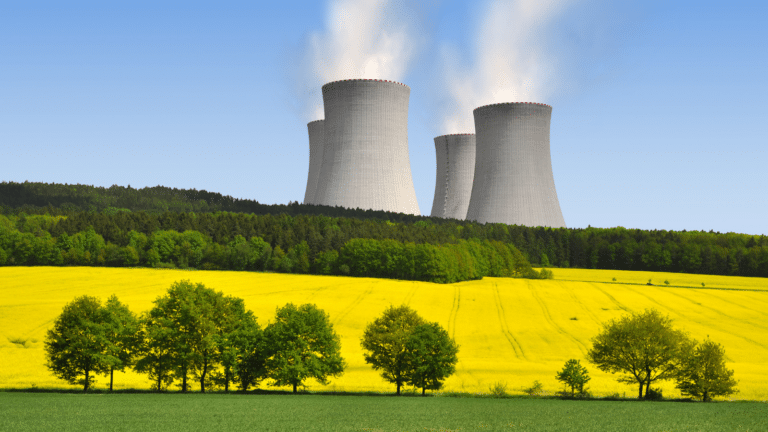Big banks predict catastrophic warming, with profit potential
Morgan Stanley, JPMorgan and an international banking group have quietly concluded that climate change will likely exceed the Paris Agreement's 2 degree
Current Access Level “I” – ID Only: CUID holders, alumni, and approved guests only
Testimonies & Speeches by Paul M. Dabbar • November 01, 2023
On November 1, 2023, CGEP Distinguished Visiting Fellow Paul Dabbar testified before the U.S. Senate Committee on Environment and Public Works on the science of extreme event attribution. A recorded live stream of the testimony is available here.
Chair Carper, Ranking Member Capito, and Members of the Committee, I am honored to be before the Senate again, and the first time before this Committee, to discuss climate impact, and energy innovation and policy.
Over my entire career I have been engaged on all the various aspects of energy, including liberating neutrons at a reactor, and addressing solutions for the environment. In particular as Under Secretary for Science at the Energy Department. And other than Senator Kelly, I have likely traveled to more remote locations to support collecting climate data than others. I am one of the few people who have been to both the geographic North and South Poles, both in government service, and in part both missions were around climate data gathering.
As Under Secretary, we supported gathering data and computer simulation of the climate, including the work of Dr. Wehner, at many of the Nationals Labs I ran including Lawrence Berkeley, and supported research at universities in all of your states.
The world has been successful at reducing different types of emissions, due to innovation. And I believe the right strategy for the world today is to continue discovery, innovation and deployment of new options. America has been the dominate country at investing in the discovery, and the lead in deployment of new energy technologies. And America is the global leader of the pipeline of new prospects. I am quite positive about those prospects due to the U.S. being the world’s leader in public and private energy R&D, including at the world’s leading universities and National Labs, the dominate winner of Nobel prizes in the physical sciences, and the global leader in venture capital, start-up’s and large energy companies.
I reach this positive conclusion based on a lot of data. Most of what we are deploying today was invented within the last generation, such as commercially effective lithium-ion chemistry, wind turbines, innovative drilling technologies, and PV solar. As Under Secretary I enjoyed the Nobel prize reception in the Senate vestibule for us winning the Nobel for the lithium-ion chemistry.
And the pipeline of future innovation is very strong. For example, Form Energy, who has recently opened a plant in West Virginia, has developed an iron-air battery, that literally rusts and de-rusts for its chemistry, that produces power for 25 times longer than lithium-ion, and is 80% cheaper. X-energy, a SMR fission company, is in the process of building the next generation of nuclear all over the country for industrial and power customers. And Montana Technology has developed a MOF- based HVAC cooling technology that uses up to 75% less energy and emissions than current compressor systems, and no freon. American innovation has, and will continue to lead the way to solutions.
One final innovation take-away we should consider is that regulators or elected officials mandating winning energy technologies is poor technology policy. The innovation ecosystem has a track record of inventing new options that were not predicted. For example, President Bush’s famous 2001 energy assessment had a long list of predictions of winning energy technologies, and most them were significantly wrong. Unpredicted innovations in drilling, solar and batteries came along, and remade the landscape, including for emissions. It is better policy for the EPA and states to allow for technology neutral, innovation-open strategies, and allow for the competition of discovery.
We need balance in energy policy. We need to concurrently care about increasing energy availability, lowering energy costs, lowering emissions, and national security. And due to American energy innovation and solid all-the- above, bi-partisan pro-supply policies, we were able to deliver on all those concurrently the last generation. And I have confidence we can do that again this generation.
While we certainly need to understand the drivers of climate change, we should focus on solutions. America is the global energy superpower. We went from the largest energy importer to the largest energy exporter. We invented for us, and the world, a portfolio of technologies that are making an impact on emissions. And there is a pipeline of even better ones to come. Policy to allow the ingenuity of Americans to harnessed, and allow deployment of their new ideas, will be the solution.
Steps by the second Trump administration show it is taking a tougher stance against the regime of Nicolas Maduro. Trump recently issued an executive order that could levy a 25...



Full report
Testimonies & Speeches by Paul M. Dabbar • November 01, 2023